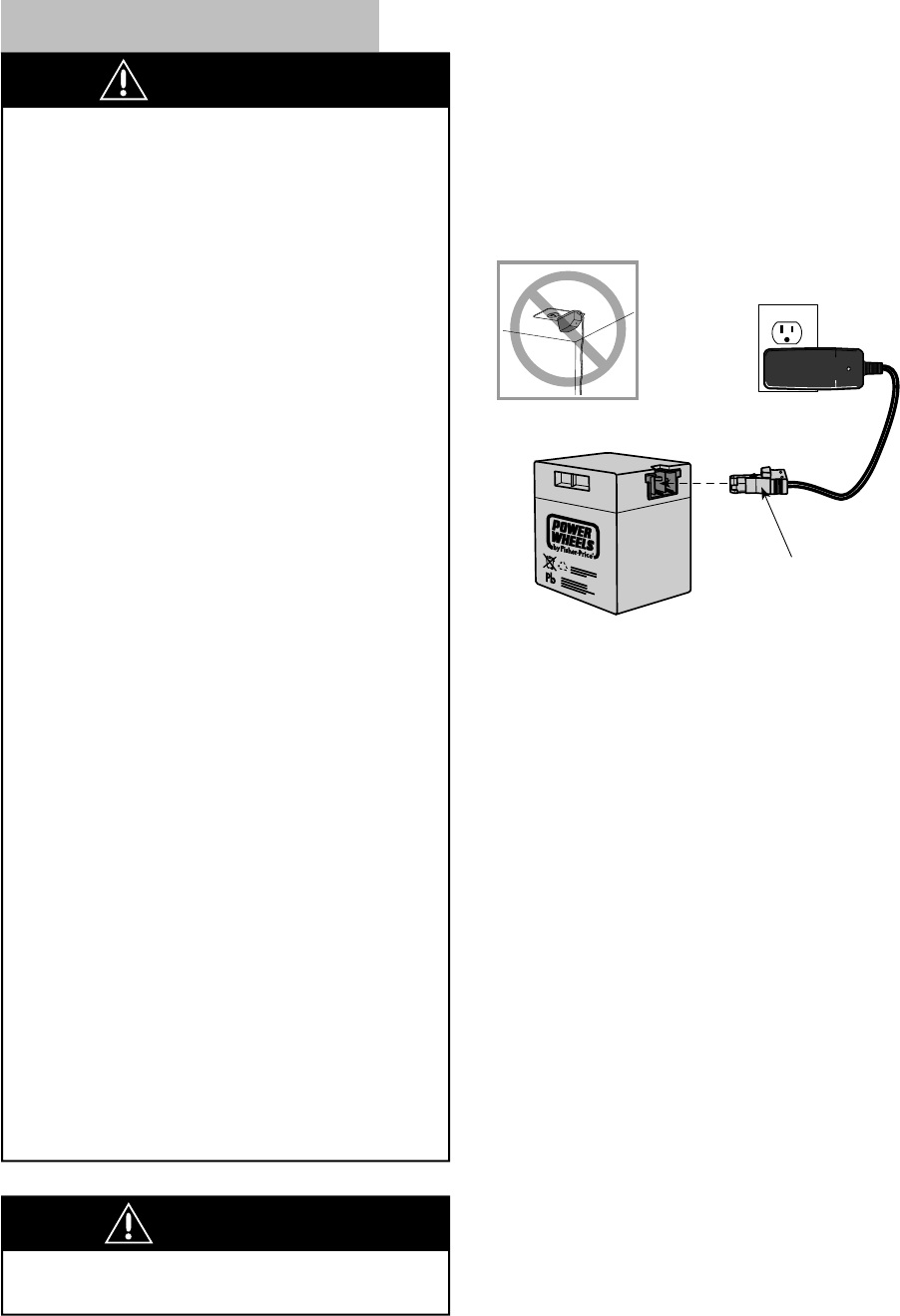
7
W4473pr-0920
ELECTRICAL HAZARD
WARNING
BATTERY CHARGING
Battery can fall out and injure •
a child if vehicle tips over.
Always use battery retainer.
PREVENT FIRE•
- Never modify the electrical system.
Alterations could cause a re
resulting in serious injury and could
also ruin the electrical system.
- Use of the wrong type battery
or charger could cause a re or
explosion resulting in serious injury.
- Use of Power Wheels® components
in products other than
Power Wheels® vehicles could
cause overheating, re or explosion.
The battery must be handled •
by adults only. The battery is
heavy and contains sulfuric acid
(electrolyte). Dropping the battery
could result in serious injury.
Never allow children to charge the •
battery. Battery charging must be
done by adults only. A child could
be injured by the electricity involved
in charging the battery.
Read the safety instructions on •
the battery.
Examine the battery, charger and •
their connectors for excessive wear
or damage each time you charge
the battery. If damage or excessive
wear is detected, do not use the
charger or the battery until you have
replaced the worn or damaged part.
CAUTION
Use the charger in dry locations only.
• Make sure you charge the battery for at least 18 hours
using the enclosed Power Wheels
®
12 volt charger
before operating your vehicle for the first time. Charge
the battery for at least 14 hours after each use of the
vehicle. Never charge the battery longer than 30 hours.
Failure to follow these instructions may damage your
battery and will void your warranty.
• Use only a Power Wheels
®
12 volt charger with “12V”
connector (input 120 VAC, 60Hz, with an output of
12 VDC) to charge your Power Wheels
®
12 volt battery.
• Plug the charger connector into the
battery socket.
• Plug the charger into a standard wall outlet.
Notes:
- If power flow to the wall outlet is controlled by a
switch, make sure the switch is “ON”.
- Use the charger only in a wall outlet. Do not plug
the charger into a ceiling outlet.
- Battery must be upright while charging.
• Before charging the battery, examine the battery
case for cracks and other damage which may
cause sulfuric acid (electrolyte) to leak during
the charging process. If damage is detected, do
not charge the battery or use it in your vehicle.
Battery acid is very corrosive and can cause
severe damage to surfaces it contacts.
• You do not need to remove the battery from your
vehicle to recharge it.
• Do not place the battery on a surface (such as
kitchen counter tops) which could be damaged
by the acid contained inside the battery. Take
precautions to protect the surface on which you
place your battery.
• Charge the battery in a well ventilated area.
• Once the battery is charged, remove the charger
connector from the battery. Unplug the charger
from the wall outlet. Refer to the Battery
Installation section for instructions on installing
your battery. If your battery is already installed
in your vehicle, simply re-connect the motor
harness connector to the battery.
Charger
Connector


















